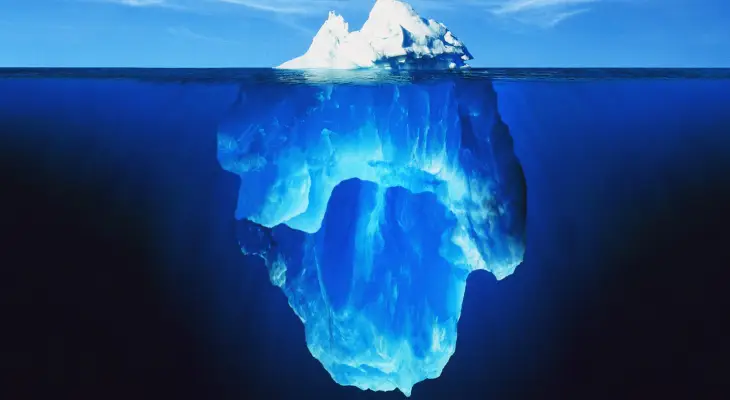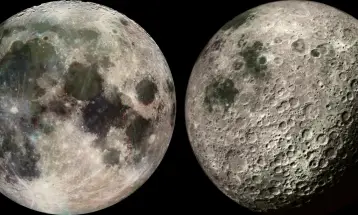Iceberg, a Natural Phenomenon That Often Dangers Many Ships

Holiday Ayo - Remember the sinking of the luxury ship Titanic? The ship sank in 1912 because it hit an underwater iceberg or also known as Iceberg. An iceberg or often called an iceberg is a large chunk of fresh water ice that has broken off from a glacier or ice shelf and is floating in open water.
Only 10 percent of the iceberg is known to be normally visible. While the other 90 percent was submerged in water. The height of the iceberg varies between 3.3 to 7.6 m above sea level and the temperature around it reaches negative 20 degrees Celsius.
As cited from the National Snow & Ice Data Center, usually places from the North Atlantic to the cold waters around Antarctica experience very low temperatures throughout the year. The accumulation of snow, made parts of it detached from the edges and drifted into the sea to form icebergs.
Apart from the fact that icebergs can pose a serious danger to ships, there are also a number of interesting facts about icebergs.
1. The danger posed
Scientists view the study of icebergs as an important phenomenon for ocean liners. Since most of the mass of the iceberg is submerged in water, this becomes a challenge for ships, especially at night when crew members tend to deform the size of the iceberg by looking at the tip. Ice under water is dangerous for ships. The sharp, hidden ice can easily punch a hole in the bottom of the boat.
Since the sinking of the Titanic in 1912, the United States and twelve other countries have formed the International Ice Patrol Unit, which uses aircraft and radar to track icebergs floating along major shipping lanes. The unit alerts ships crossing North Atlantic and Antarctic waters of the presence of icebergs on their route.
2. Iceberg is important for scientists to identify the effects of climate change
Although dangerous, icebergs also serve as important tools for scientists, where they use icebergs to study climate and ocean processes, primarily supporting marine life in the Arctic Region.
The occurrence of global warming and climate change caused the extinction of polar bears, because the melting of icebergs, forcing these animals to swim further into the sea in search of hunting grounds which could cause them to drown and reduce the number of bears.
In addition, it was found that the sea level rise, caused by the fresh water from melting icebergs, does not contain salty seawater.
3. Identical iceberg color is very blue
Iceberg is blue, because there is a chemical bond between oxygen and hydrogen in water. However, this is different from the blue sky phenomenon caused by Raleigh scattering.
4. Iceberg is not salty and safe for consumption
Icebergs do not have a salty taste, considering that icebergs are formed from snow and fresh water not from sea water. And iceberg is very safe for consumption.








Leave a comment